Patrick Huston reveals the resolutions you should be making in 2018 to make it your best archery year yet
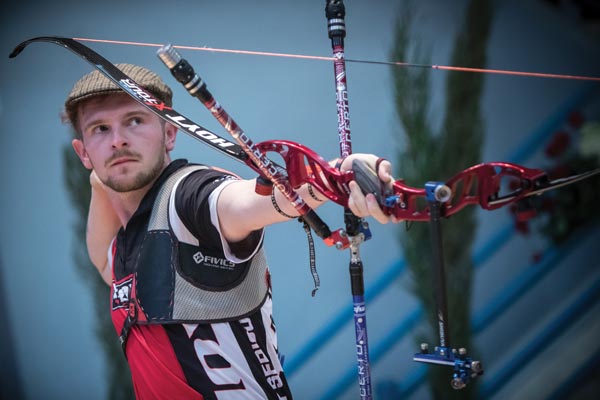
If you want to get good at something then start talking like it!
So we’ve come into spring (finally!) and it’s that time again when people decide they are going to get fit, stop drinking, visit the family more and other wholesome things. Use the lighter evenings and warmer weather as an opportunity to build new habits which will benefit you in the long run. However, that is the important bit of this – you need to build a habit.
Going running three times a week for a fortnight isn’t going to help you lose those spare pounds, just as not eating chocolate ’til Valentine’s isn’t going to save you from rotting teeth. We need to implement things in our daily lives which are something we can stick to as a long-term change in our behaviour so that the effects last. I’m going to run through a few resolutions for archery that should really help your performance and shooting in general, but more importantly I want to help you build these into the structure of your life so that you continue to reap the rewards, from May to 2020 and beyond!
Shoot More, Shoot Better
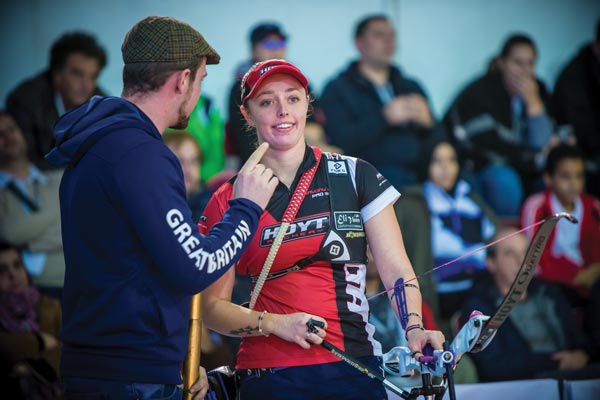
Shoot with a friend or coach for a good hour, and ask them to note down every aspect of what you do before you start looking for areas of improvement
Now the first thing that will spring into any competitive archer’s mind when they think of new year’s resolutions is to shoot more. This is a nice idea but, realistically, if you are reading this magazine and actively want to get better at your archery, you are probably already down at the club, out in your back garden or shooting in the garage as much as your schedule allows. Trying to squeeze in more time each day is going to be difficult and is likely not to become a long-lasting habit. What we can do is to use our time more efficiently in order to gain more development from our training time. Now this phrase ‘training time’ is how we should see it, not ‘shooting time’. Of course there has to be time to shoot within our training time, but there are many other avenues we can explore in which we can improve.
I therefore believe the first new year’s resolution should be “I Use My Training Time Effectively, In Order To Improve My Archery”. Notice as well that I’ve phrased this in the first person present tense, but I’ll get to that later. If we are going to use our training time effectively we need to know what to work on, and most people will think; “my shot”, “my release”, “gripping the bow” or maybe even “my fitness”. While these are elements which may need improving, I would ask you to really think about where your flaws are. One of the best ways to improve taught in Lanny Bassham’s With Winning in Mind is to take a weakness and turn it into a strength. Get a coach or a friend to watch you shoot – and I mean really watch you – six shots with them just looking at your front wrist and hand, get them to write down comments on your consistency, movement, pressure, and so on. Then do six shots inspecting your front elbow, does it wobble, is it rotated, and write down their notes. Then the anchor; do you fill the gap, is there solid bone on bone contact, do you move your head as you expand through the shot.
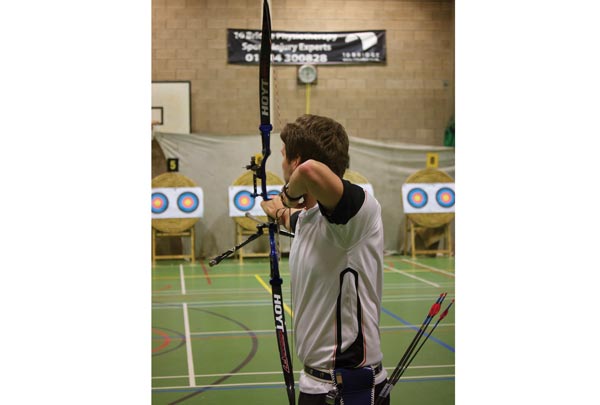
If you’re keen on improving your archery, chances are you’re already spending as much time shooting as your schedule allows
You can do this with every single element of your shot. Break it down, analyse it and assess it. After this exercise, which should take a minimum of an hour by the way, you will have a detailed list of all the elements of your technical shot. This is just half of step one. The second stage is to analyse more broad themes of your shooting: balance, bow fitness, core strength, coordination, stamina (bow and whole body), and leg strength. Obviously these can be assessed in a methodical way as well – there’s even a whole topic called sport science which has a variety of ways to test these! However, we’re archers and for the purposes of this article a thoughtful and frank discussion will do fine.
If we are going to “Improve My Archery”, then the best thing to do is to work on our weaknesses. And I don’t mean just anything that is weak. Look at things in a cost/benefit style manner: what element of your archery is going to give you the most improvement for your investment of time? You might have a slightly high front shoulder in your shot, but the fact you forward loose nine times out of 10 is going to affect your groups more. We can easily get stuck in our ways of thinking, but if you think laterally about what really needs to improve, you’d be surprised how often it isn’t an element of your technique! Can I give you a hint? 60 per cent of issues can be removed by being properly bow fit, but I’ll get to that in a bit.
Time management
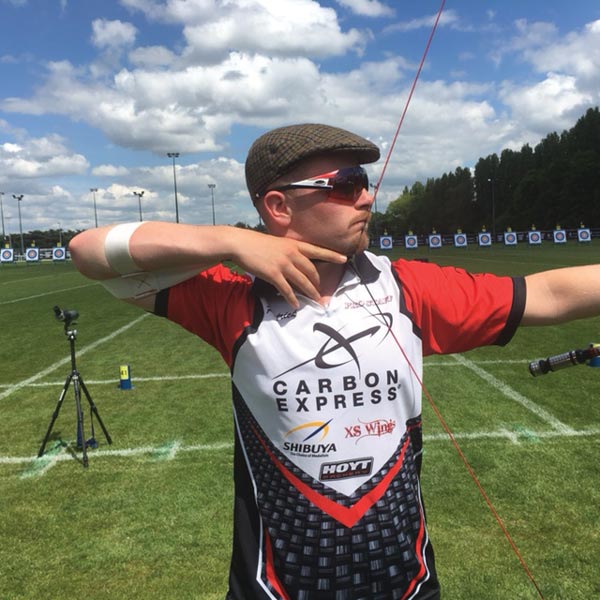
Using a bow trainer will help both strength and a weak release by exaggerating a collapse
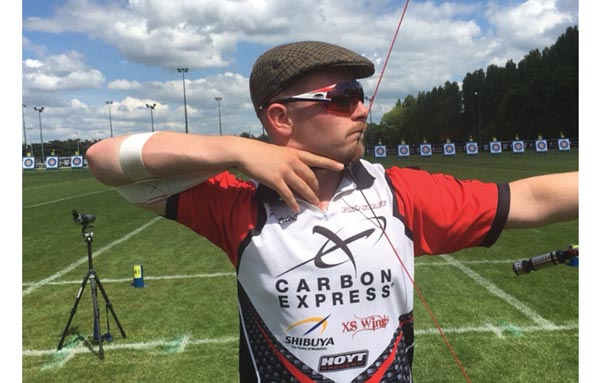
Using a bow trainer will help both strength and a weak release by exaggerating a collapse
So now we’ve worked out what we are going to do to improve, we have to decide how to “Use My Time Effectively”. Once we have decided the things to work on we need to think about ways in which to train them to improve. There is a constant theme in literature regarding performance sport, or really any skill at all, which talks about deliberate practice. This basically means working outside your comfort zone so that you make mistakes. Your brain then learns to correct those mistakes, making us better at said skill. To use your time effectively don’t just try to do something better, or try to do more of something to better embed it. Think of ways to add stresses into your training so that you make errors. If your balance is poor then raise one foot to exacerbate it. If your release is flappy then get someone to tie a bungee cord to it and exaggerate that flapping – your subconscious will correct it. If you collapse after the shot then shoot with a shot trainer on; this will exaggerate the collapse as the bow is still attached and it will teach you to stay strong through expansion, click and follow through. These are all methods to address specific issues but hopefully the way of thinking will translate and you can apply them to whatever you have decided to work on.
Now in order to make this a habit that sticks we need to structure it into our ‘training time’. You should really write out a plan of how you’re going to fit it in, what you want to work on, and when, but there’s not enough space in this article. The important thing is to make ourselves do the training! In club scenarios it’s very easy to just arrive, set the bow up, maybe do a warm up and then start shooting. You might get better doing this, but most likely you’ll maintain your standard. We have to use our time effectively. A way I have found which is really useful to make me train these other areas is to write a big note to myself and stick it inside my bowcase. I’ve also put an elastic band with a laminated list onto my sight pin when packing up so I have to see it before I can shoot. These are great ways to remind you to ‘train’ during your archery. Another and probably the best way to keep up with these habits is to find someone else in the club who is willing to properly work at their archery and do your variety of exercises together, likely the person who helped you with the analysis.
Bow Fitness
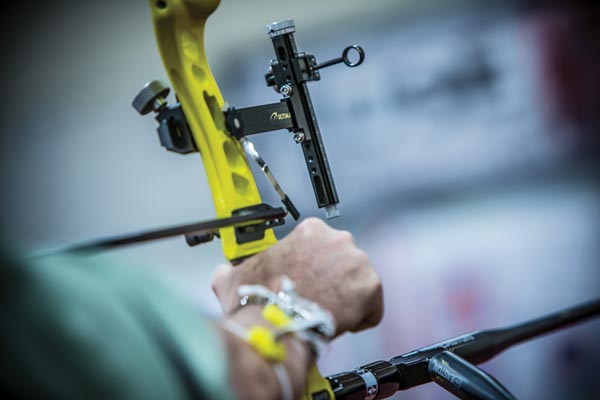
Work out which areas will give you the most return on your investment of time – if your execution is your biggest weakness, try and turn it into a strength
I know the above can seem a bit long-winded, but resolutions should be personal so explaining the best way to find and implement what we need to improve takes time. Now I’m going to be a little more prescriptive and tell you what you need to do!
“I Bow Train for 30 Minutes a Day, Four Days a Week Minimum”. Bow fitness is the number one thing holding 95 per cent of archers back. Please read my previous article on bow training from this magazine again (available at PatrickHuston.com) or watch my YouTube playlist #HowToArchery. I don’t care if you think you are bow fit, you aren’t – even I’m not where I would like to be. Start devoting a respectable amount of time to remedying that, but it doesn’t have to be training time, you can fit it in smaller chunks around your day. Boiling some pasta – bow training; watching TV – bow training; adverts – bow training; mother in law ranting about a sick cat – bow training; revising – bow training (a big one for students is reading or watching a lecture while bow training). It really can fit round anything and has the best time investment to reward ratio!
Be positive
Now the last resolution I’ll give you is a huge topic, and I’ll probably do my next article on it: “I Am Positive About My Archery and Think In a Consistent Manner”. If you want to get good at something then start talking like it! Don’t tell your friends about that miss at 80 yards, or how you messed up two targets in a row round the field course, or how you shot a 110 with a three! Tell them about that awesome group, how nice your shot feels today, the 30 you shot, and so on. You’d be surprised how big a difference this can make. And call others out on it! Myself and some of my fellow GB team members play ‘Lanny Bassham Chess’ with each other. This means if we hear somebody being negative about their archery, we quote a chess piece relevant to the seriousness of the self image damage. I’ll get more into thinking consistently soon. Trust me, being positive works, plus you’ll enjoy it more!
Hopefully this article and the strategies I’ve explained will help you to achieve the goals you want to in archery this year. Remember, consistent effort over a period of time will give rewards. Let’s get that effort in the right areas and reduce that time! Shoot strong!
This article originally appeared in the issue 122 of Bow International magazine. For more great content like this, subscribe today at our secure online store: www.myfavouritemagazines.co.uk

